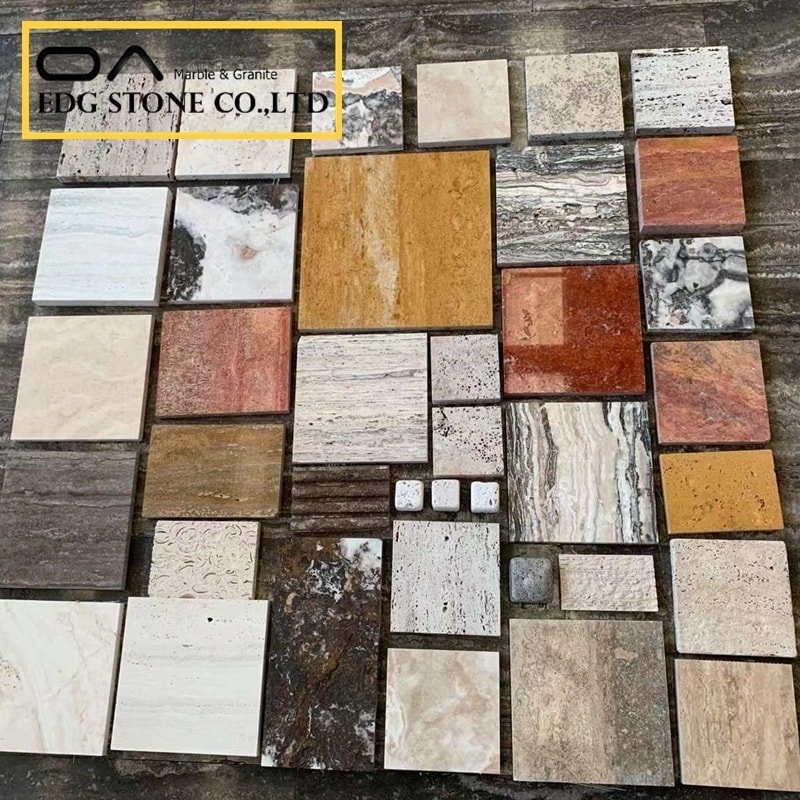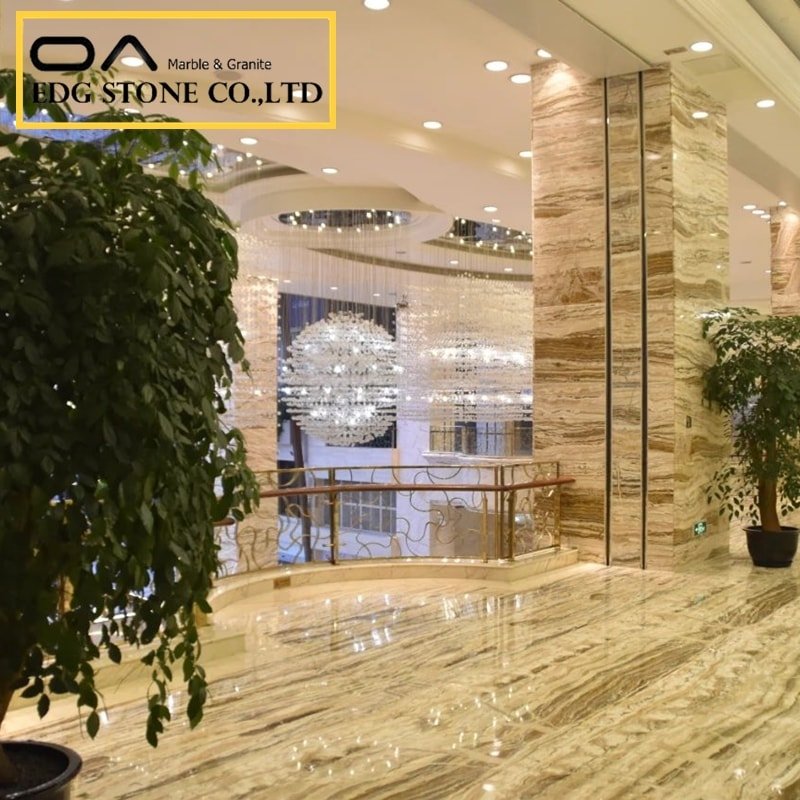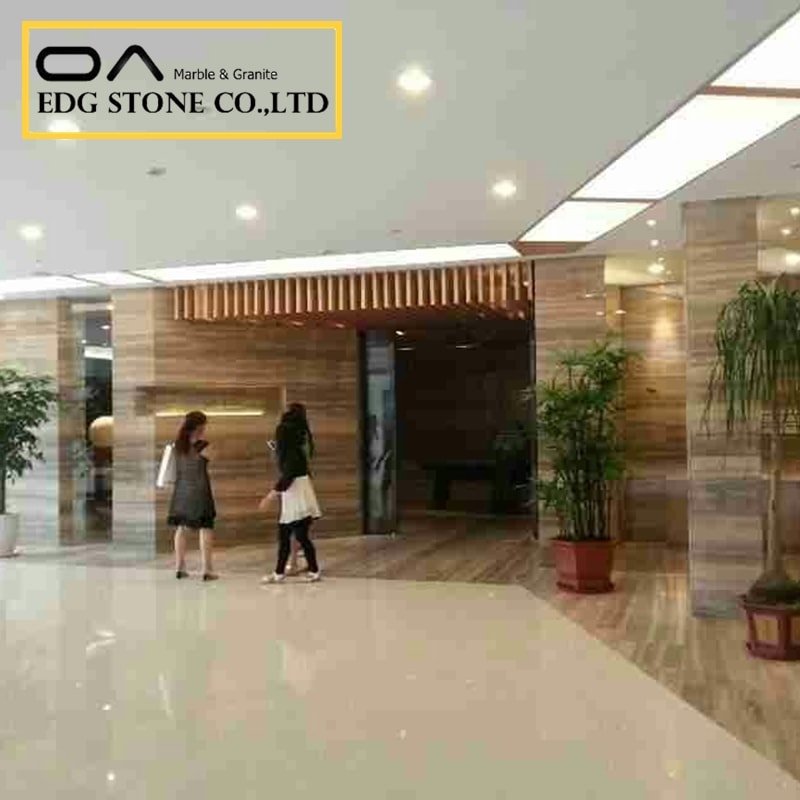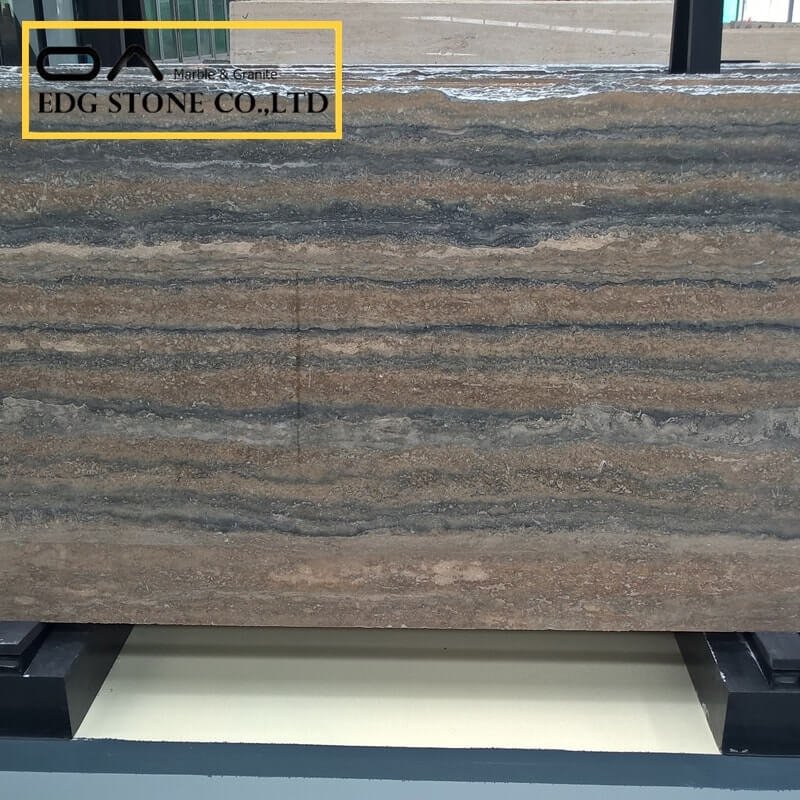Travertine: Everything You Need to Know
Table of Contents
Toggle- Travertine: Everything You Need to Know
- What is Travertine: Types and Colors
- What is Travertine Stone: Uses and Applications
- Difference between Marble and Travertine
- What is Travertine & How to Care for It
- Travertine Flooring: Comprehensive Pros and Cons Review
- FAQ
- What is travertine tile?
- What is travertine made of?
- What is travertine stone?
- What is travertine flooring?
- What is travertine marble?
- What are travertine pavers?
- What is travertine coping?
- What are travertine countertops?
- What is travertine material?
- What is travertine pool coping?
- What is a travertine table?
- Summary
- SEO Tags
- References
Travertine is a form of natural limestone deposited by mineral springs, especially hot springs. Celebrated for its warm, earthy hues and unique surface textures, travertine has been used since ancient times in buildings, monuments, and sculptures. From the Roman Colosseum to modern luxury homes, it remains a symbol of elegance and durability. In this comprehensive guide, we’ll explore the origin, composition, key properties, and practical insights into selecting, installing, and caring for travertine tiles. Whether you’re a homeowner, designer, or supplier, this article covers everything—from travertine 中文 translations to professional maintenance tips.


What is Travertine: Types and Colors
Travertine occurs in a spectrum of colors influenced by mineral content, from creamy whites to deep reds and browns. Understanding the varieties can help you choose the right type for your project.
Types of Travertine
Classic Cream
Soft beige and ivory tones
Ideal for traditional designs
Silver Vein
Gray base with subtle silver veins
Contemporary appeal
Noce (Walnut)
Rich brown hues with contrasting streaks
Warm, inviting look
Ivory
Pale, almost white appearance
Brightens small or dark spaces
Gold
Honey-golden shades with ochre accents
Adds luxury to bathrooms and entryways
Colors and Finishes
Honed: Smooth, matte surface—popular for travertine flooring and countertops.
Tumbled: Soft, aged look with rounded edges—great for patios and rustic interiors.
Polished: High-gloss finish—accentuates travertine composition patterns but can be slippery when wet.
Brushed: Lightly textured—adds grip for outdoor use.
Keyword Focus: Travertine stone origin, Travertine properties, Travertine tiles
What is Travertine Stone: Uses and Applications
Travertine’s versatility makes it a go-to material in both residential and commercial settings. Below are common applications:
Indoor Applications
Flooring: Durable and timeless, travertine flooring suits kitchens, hallways, and living rooms.
Countertops: With proper sealing, travertine countertops provide a warm, natural aesthetic.
Backsplashes: Textured tiles create an eye-catching focal point in kitchens and bathrooms.
Wall Cladding: Adds dimension and sophistication to feature walls and fireplaces.
Outdoor Applications
Pavers and Patios: Travertine pavers resist heat and slip, perfect for pool surrounds and terraces.
Pool Coping: Travertine pool coping remains cool underfoot and blends seamlessly with water features.
Garden Pathways: Textured finishes enhance safety and charm in landscaping.
Steps and Stairs: Durable for high-traffic areas; pairs well with wrought iron railings.
Commercial Uses
Retail Spaces: Luxury boutiques often choose travertine stone for an upscale ambiance.
Hotels & Spas: Soothing natural colors complement relaxation areas.
Restaurants: Durable floors withstand heavy foot traffic while maintaining elegance.
Keyword Focus: Travertine stone uses, Where is travertine found

Difference between Marble and Travertine
While both are natural stones, marble and travertine differ in formation, appearance, and performance.
| Feature | Travertine | Marble |
|---|---|---|
| Formation | From mineral springs (calcium carbonate) | From limestone under heat and pressure |
| Surface Texture | Porous, pitted | Generally denser, smooth |
| Color Range | Earthy neutrals (beige, gold, ivory) | Wide range including greens, blacks |
| Durability | Softer, more susceptible to scratching | Harder, more scratch-resistant |
| Maintenance | Requires sealing every 6–12 months | Seals less frequently but still advised |
| Common Uses | Outdoor pavers, rustic interiors | Formal interiors, sculptures, and flooring |
Key Takeaways
Porosity: Travertine absorbs more moisture; sealing is essential.
Appearance: Travertine’s natural voids and textures contrast with marble’s veining.
Cost: Travertine is generally more affordable than high-grade marble.
Keyword Focus: Travertine 中文, Travertine vs marble
What is Travertine & How to Care for It
Caring for travertine ensures its beauty and longevity. Follow these steps:
Daily Maintenance
Clean Spills Promptly: Acidic liquids (vinegar, citrus) can etch the surface.
Use Mild Detergents: pH-neutral cleaners prevent damage.
Periodic Care
Sealing
Frequency: Every 6–12 months, depending on traffic and finish.
Product: Use impregnating sealers designed for natural stone.
Deep Cleaning
Tools: Soft brushes and non-abrasive pads.
Solution: Mixture of warm water and mild soap.
Repairing Damage
Small Chips and Cracks: Fill with color-matched epoxy.
Etch Marks: Light honing can restore a honed finish.
Dos and Don’ts
✅ Do use mats or rugs in high-traffic areas.
✅ Do place felt pads under furniture legs.
❌ Don’t use vinegar, bleach, or ammonia cleaners.
❌ Don’t drag heavy objects across the surface.
Keyword Focus: Travertine properties, Travertine composition
Travertine Flooring: Comprehensive Pros and Cons Review
Pros
Aesthetic Appeal: Natural textures and warm tones enhance any space.
Durability: When sealed properly, withstands moderate traffic.
Temperature Regulation: Stays cool underfoot—ideal for warm climates.
Eco-Friendly: Natural stone with minimal processing.
Cons
Porosity: Requires regular sealing; prone to staining if untreated.
Hardness: Can be slippery when polished; may crack under heavy impact.
Maintenance: Ongoing sealing and specialized cleaners needed.
Installation Cost: Higher than ceramic or porcelain tiles due to labor.
Installation Tips
Subfloor Preparation: Ensure a level, stable base.
Underlayment: Use a crack-isolation membrane.
Grout Selection: Choose sanded grout for wider joints; match color to tile.
Sealing: Seal both before and after grouting.
Keyword Focus: Travertine flooring, Travertine tiles


FAQ
What is travertine tile?
Travertine tile is a flat, cut slab of travertine stone used for flooring, wall cladding, and countertops. Available in honed, tumbled, brushed, and polished finishes, it offers durability and a unique textured appearance.
What is travertine made of?
Travertine is primarily composed of calcium carbonate deposited by mineral springs. Its porous, fibrous structure results from rapid precipitation, trapping bubbles, and creating characteristic pits.
What is travertine stone?
Travertine stone refers to the natural sedimentary rock formed around geothermal springs. It’s part of the limestone family and prized for its warm tones and surface patterns.
What is travertine flooring?
Travertine flooring uses large-format tiles or slabs installed indoors or outdoors. Known for its thermal properties, it’s comfortable underfoot in warm environments but requires sealing to prevent moisture penetration.
What is travertine marble?
Although often called “travertine marble,” true marble is metamorphic limestone. Travertine forms in similar ways but remains sedimentary. The term merges marketing convenience with visual similarity.
What are travertine pavers?
Travertine pavers are thicker, unpolished slabs used for patios, driveways, and walkways. Their rougher finish provides traction and natural beauty in landscape design.
What is travertine coping?
Coping refers to the stone border around pools or steps. Travertine pool coping remains cool underfoot and provides a slip-resistant, elegant edge to water features.
What are travertine countertops?
Travertine countertops are cut and polished slabs installed in kitchens and bathrooms. They require diligent sealing to protect against staining and etching from acidic substances.
What is travertine material?
As a natural stone, travertine material originates in hot springs and limestone caves. Its composition and formation processes give it distinct durability and aesthetic appeal.
What is travertine pool coping?
Travertine pool coping is the finishing stone placed around the perimeter of a pool. Its porous nature allows for excellent drainage, and its thermal properties keep the surface cool.
What is a travertine table?
A travertine table uses a tabletop or inset panel of travertine stone, often supported by metal or wood bases. It brings a touch of natural elegance to dining and outdoor furniture.
Summary
In this in-depth guide, travertine is revealed as a versatile, natural limestone prized for its earthy colors, variety of types, and broad applications—from elegant travertine tiles indoors to durable travertine pavers outdoors. We explored travertine composition, properties, and maintenance best practices to help homeowners, designers, and suppliers make informed decisions. Understanding the differences between marble and travertine, proper care, and the pros and cons of travertine flooring ensures your projects achieve both beauty and longevity.
SEO Tags
travertine, travertine 中文, Where is travertine found, Travertine stone origin, Travertine properties, Travertine tiles, Travertine stone uses, Travertine composition, travertine flooring, travertine countertops, travertine pavers, travertine pool coping, travertine design, natural stone supplier, travertine wholesale, travertine factory, travertine manufacturer, buy travertine, cheap travertine, high quality travertine, travertine installation, travertine maintenance, travertine sealing, travertine care, travertine pros cons, travertine vs marble, travertine patterns, travertine finishes, travertine trend, travertine for sale, travertine distributor
References
Doe, Jane. “Understanding Travertine Tiles.” The Spruce. https://www.thespruce.com/travertine-tiles-4587947
Lee, Christopher. “Travertine vs Marble: What’s the Difference?” BuildDirect. https://www.builddirect.com/blog/travertine-vs-marble
Miller, Sarah. “Travertine Pavers for Patios.” HGTV. https://www.hgtv.com/design/remodel/interior-remodel/travertine-pavers
Brown, Emily. “Travertine Pool Coping Benefits.” Pool Magazine. https://www.poolmagazine.com/travertine-coping
Garcia, Luis. “How Travertine Forms in Nature.” Geology Today. https://www.geologytoday.com/travertine-formation
Johnson, Mark. “Travertine Flooring Installation Tips.” Flooring Contractor. https://www.flooringcontractor.org/travertine-installation
Evans, Patricia. “Travertine Countertop Maintenance.” HomeAdvisor. https://www.homeadvisor.com/travertine-countertops
Wang, Li. “Travertine Stone Uses and Applications.” Architectural Digest. https://www.architecturaldigest.com/travertine-uses
